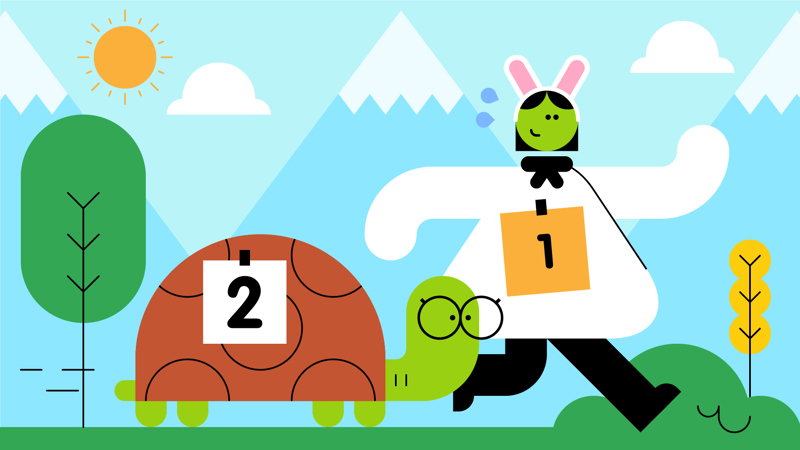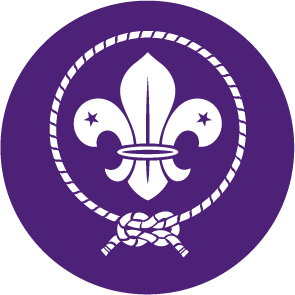
Discover the Scout Promise with Aesop's Fables
You’ll need
- Copies of the different versions of the Scout Promise
- Copies of the Promise fables sheets
Before you begin
- Use the safety checklist to help you plan and risk assess your activity. There's also more guidance to help you carry out your risk assessment, including examples.
- Make sure all young people and adults involved in the activity know how to take part safely.
- Make sure you’ll have enough adult helpers. You may need some parents and carers to help if you’re short on helpers.
Planning and setting up this activity
- You may want to use this activity as part of an Investiture or as a Promise renewal.
Running this activity
Talk about stories and fables
- Gather everyone together and ask people to think about their favourite story.
- Going round the circle, anyone who wants to can share their favourite story and a little bit about it. People may want to talk about what happened, and how it made the characters feel. They could also talk about what the characters learned, and what the reader could learn from the story.
- You could give everyone 30 seconds or a minute. These could also be folk tales, myths and legends, as well as books, such as Robin Hood.
- Tell everyone that stories often have a purpose, then ask them to think about the purpose of their story. There might not be one and that’s OK. The purpose could be to make us laugh, feel happy, feel sad, be inspired, or teach us something.
- Ask if anyone knows what a ‘fable’ is. Explain that a ‘fable’ is a type of short story. The characters are often animals. The most famous fable writer was called Aesop. He lived in ancient Greece over 2,000 years ago and his most famous fable was ‘The tortoise and the hare’.
- Lots of fables have the purpose to teach us about morals. Morals means a lesson or message that you can take from a story or experience, such as to not be greedy, to tell the truth and to never judge someone by how they look.
- Ask if anyone knows what the moral of the story might be ‘The tortoise and the hare’ is. The moral lesson of the story is that you can be more successful by doing things slowly and steadily, than by acting quickly and carelessly. You may have heard of the phrase that ‘slow and steady wins the race’. This fable can also teach us that patience, hard-work and never giving up can lead to success.
Practise the fables
- Everyone should choose the version of the Promise that’s right for them, then everyone should say, sign or think about their Promise at the same time. It doesn’t matter if different versions overlap.
- Either in small groups or as one big group, depending on what works best, read out a fable. If you’re in small groups, each group could use a different fable.
- You could also act it out. One person could read the story, while others perform it. You could also use puppets and toys to act it out.
- When the story's been read, the group should talk about its meaning. Some questions could be:
- What do the characters do?
- The purpose of fables is to teach us something. What do you think this story teaches us? What is the moral (message or lesson) of the story?
Your Scout Promise
- Ask everyone what they think the purpose of our Scout Promise is. Explain that our Scout Promise is a simple way to help young people and adults celebrate their shared Scout values. Every Scout promises to stick by these values when they become a member.
- Ask everyone what the message or lesson of our Scout Promise and Scout values is.
- Now, ask everyone to think about the fables. Which part of the Scout Promise could the story link to? Did the story show us to be kind, be helpful, love our world and do our best?
- Ask people why they think that being kind, being helpful, loving our world and doing our best is an important part of being a Scout. How can we be kind, helpful, love your world or do your best every day?
- See if anyone can think of any ways they’ve kept their Scout Promise this week by being kind, helpful or doing their best.
- Now, ask everyone to create something, such as a poem, or a piece artwork of their favourite fable that will help them to remember their Scout Promise.
Reflection
Each group might want to remind everyone what their fable was about, and how it linked to the Scout Promise. The stories taught us to be kind, be helpful, love our world and do our best.
This activity also helped you to respect others and the world around you. Do you think respecting others is part of the Scout Promise? How can you show you respect other people?
Do you know any other stories (books, films, plays, or musicals) where people learned to respect others? Do you have an example of when you kept your Promise or respected others?
This activity was also a chance to build friendships. How did the different friends treat each other in the stories? How do you think it made the characters feel? Did this activity give you a chance to make friends with other people?
Safety
All activities must be safely managed. You must complete a thorough risk assessment and take appropriate steps to reduce risk. Use the safety checklist to help you plan and risk assess your activity. Always get approval for the activity, and have suitable supervision and an InTouch process.
Everyone else could also guess the part of the Promise that a group’s story relates to.
Groups can be as imaginative as they like—they may want to change some of the dialogue of their plays, or add in extra actions.
No one has to share an example of a story if they don’t want to.
People can take whatever role is right for them. If anyone doesn’t want to perform, they could play a role in a pair, or maybe they could act as a director instead.
All Scout activities should be inclusive and accessible.
Why not meet requirement three of the Beavers Creative Activity Badge by making props or masks for your fable stories? You could try junk modelling with clean items of recycling.
Everyone can come up with their own stories if they want to. The fables are just there for guidance, or as a backup if people get stuck.


